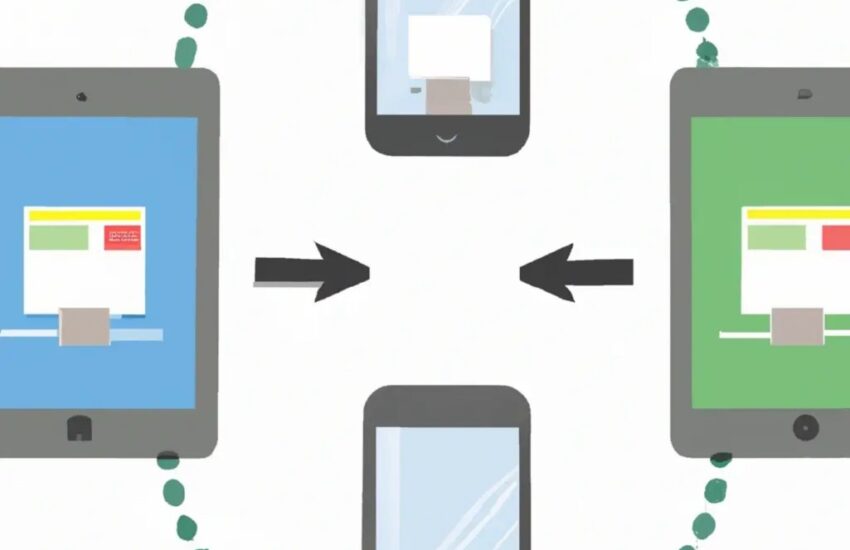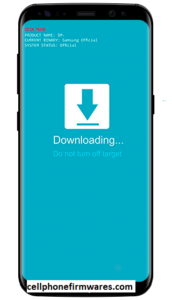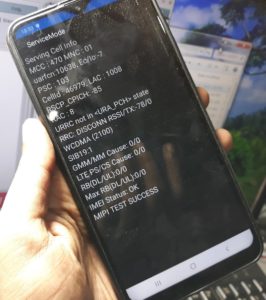Dual carrier is an important concept in mobile network technology that refers to using two radio frequency carriers simultaneously to boost network capacity and data speeds. As mobile networks evolve from 4G LTE to 5G, techniques like dual carrier aggregation are key to delivering faster, higher bandwidth services to support new applications.
This article will provide an overview of what dual carrier means, how it works, the benefits it provides, and how mobile networks are implementing dual carrier configurations. We’ll look at the following aspects:
- Definition of dual carrier
- How it relates to carrier aggregation
- Technical implementation details
- Evolution from early LTE to LTE-Advanced
- Combining low and high-frequency bands
- Dual carrier vs. dual connectivity
- Real-world performance boosts
- Use in 4G, 5G, and future networks
Gaining a strong understanding of dual carrier technology will help explain the real-world improvements consumers see as networks upgrade to deliver faster mobile broadband.

What is Dual Carrier?
First, let’s start with a quick definition of what dual carrier actually means.
Dual Carrier Definition
Dual carrier refers to a mobile network using two different radio frequency carrier signals to transmit data to a user device simultaneously. This effectively doubles the amount of spectrum bandwidth available for the data connection.
Carrier Aggregation
Dual carrier is made possible through a technology called carrier aggregation. This allows a mobile device to receive and transmit on two carriers at the same time by using two separate radio transceivers.
The two carriers can be in either contiguous frequency blocks right next to each other, or separated in non-contiguous blocks across diverse frequency ranges like 700MHz and 1800MHz.
Boosts Capacity and Speed
By aggregating two carriers together into one data session, the dual carrier delivers important benefits:
- Doubles the bandwidth capacity available to a user, enabling higher data rates
- Provides better reliability through redundancy across two links
- Offers more flexible allocation of disparate spectrum assets
- Results in a faster, smoother, and more capable mobile broadband experience
How Dual Carrier Works
Now that we know what dual carrier refers to at a high level, let’s look at some of the key technical details on how it is implemented in mobile network infrastructure and devices.

Network Infrastructure
To enable dual carrier capabilities, the cell towers and base stations in the mobile network need radios and antennas supporting both frequency bands that will be aggregated. The carriers do not have to originate from the same cell site location.
The base station uses a scheduler to orchestrate transmission and reception across the two carriers to the device simultaneously. This requires tight coordination and channel awareness.
User Equipment
To connect to a dual carrier network, user devices like smartphones also need radios and antennas capable of sending and receiving data across both frequency bands. This generally means:
- Two separate radio transceivers in the device
- One primary and one secondary antenna
- Channel monitoring and measurement across carriers
The device’s modem and processors coordinate the use of both carriers following the network’s scheduling instructions on a per-transmission basis.
Carrier Bonding
Dual carrier transmission relies on a logical bonding of the two carriers into one data flow. The scheduling intelligence ensures packets get optimally distributed across the carriers and recombined in the correct order at the receiving end. This enables the dual carrier connectivity to be managed as one logical high-bandwidth link.
Evolution to LTE-Advanced
Dual carrier technology first emerged in the transition from early 4G LTE networks to LTE-Advanced standards which could deliver faster throughput speeds.
Early LTE Limitations
Initial LTE deployments faced two key limitations:
- Most carriers were only 10 to 20 MHz wide – limiting bandwidth
- Cells were usually on one frequency band – lacking flexibility
This constrained the growth trajectory for increasing speed capabilities on LTE networks.
Dual Carrier in LTE-Advanced
The 3GPP standards group addressed these issues in LTE-Advanced specifications by introducing carrier aggregation capabilities. This enabled support for:
- Wider individual carriers up to 20 MHz
- Aggregating up to five carriers simultaneously
- Total bandwidth up to 100 MHz using multiple carriers
Dual carrier aggregation with two 20 MHz carriers became the common early implementation, instantly doubling bandwidth from a single carrier.
Higher Speed Milestones
The speed milestones enabled by the dual carrier include:
- Cat 4 devices – 150 Mbps dual carrier downloads
- Cat 6 devices – 300 Mbps dual carrier downloads
- Cat 9 devices – 450 Mbps dual carrier downloads
This provided a major speed boost compared to single-carrier 4G LTE.
Combining Low and High-Frequency Bands
To maximize the benefits of dual carriers, most networks utilize one low-frequency band and one higher-frequency band in the aggregation.
Low-Frequency Carrier
The low band carrier (e.g. 700-900 MHz) provides:
- Wider area coverage – good reach across urban, suburban, and rural areas
- Better building penetration into indoor areas
- More robust mobility performance at higher speeds
High-Frequency Carrier
The high band carrier (e.g. 1800-2600 MHz) enables:
- Faster peak data speeds and more capacity in dense areas
- Support for advanced LTE capabilities like MIMO antenna techniques
Best of Both Worlds
By bonding the two types of carriers together, networks can deliver an optimal blend of coverage, reliability, and speed demanded by consumers.
Dual Carrier vs. Dual Connectivity
In learning about dual carriers, you may also come across the term “dual connectivity.” While related, these are two distinct concepts.
Dual Connectivity
Dual connectivity refers to using connections from two different cell towers/base station sites simultaneously. For example, aggregating carriers from a macro cell and a small cell together.
Key Differences
The key differences are:
- Dual carrier aggregates two carriers from the same cell site
- Dual connectivity combines carriers from different cell sites
- Dual connectivity adds network topology considerations
- Dual carrier focuses on joint RF transmission
So dual carrier is concentrated on coordinated radio transmission while dual connectivity leverages the network architecture.
Real-World Performance Gains – Dual Carrier Mean
But does using dual carriers actually make a noticeable difference in the real-world mobile user experience?
Faster Downloads
Absolutely – by doubling the bandwidth to mobile devices, users see tangible speed improvements. Some examples:
- 2X faster app and video streaming downloads
- 50% reduced video buffering time
- 30% faster web page loading
So more responsive apps, videos, and web browsing across the board.
Network Capacity
Beyond individual user experience, the expanded capacity also benefits the cell tower. With 100 MHz total bandwidth using a dual carrier, the cell site can serve:
- 2X number of users
- 1.7X more data traffic overall
Enhancing both speed and network capacity for consumers.
Use Case: Stadium Event
A stadium full of smartphone users is a perfect example use case. Dual carriers can easily handle the surge of mobile traffic from attendees, keeping speeds fast even with high demand in crowded locations.
Implementation in 4G and 5G
As we look ahead, the dual carrier will remain an essential technique as networks evolve to 5G and beyond.
4G LTE Networks
On mature 4G LTE networks, dual carriers will continue to be the workhorse configuration to maximize speed and capacity through carrier aggregation.
Early 5G Deployments
In early 5G network deployments, dual carrier aggregation is also being used to boost 5G mid-band and low-band spectrum.
Beyond 5G Evolution
Even as networks progress to more advanced forms of 5G through mmWave, massive MIMO, and shared spectrum, dual carriers will still play an optimization role in combining coverage and capacity carriers.
FAQs – Dual Carrier Mean
What phones support dual-carrier?
Most modern LTE-Advanced smartphones support some level of dual carrier capabilities. Flagship devices tend to support the highest aggregation speeds (e.g. Cat 12 or Cat 16).
Do both carriers need to be from the same operator?
In most cases yes, the carriers are from spectrum licensed to the same mobile operator. However, some advanced network sharing arrangements allow aggregating spectrum from different operators.
Does dual carrier drain my phone’s battery faster?
There is minimal battery life impact from the dual carrier itself. The faster speeds enabled may lead to increased usage and battery drain. But efficient modem implementations minimize any direct dual carrier battery impact.
What about the triple carrier or more?
Even more, bandwidth can be aggregated through the triple carrier or five carrier aggregation configurations, combining three or five 20 MHz carriers for up to 300 MHz total bandwidth.
Summary Table
| Aspect | Description |
|---|---|
| Definition | Using two carriers simultaneously through carrier aggregation |
| Benefits | Higher bandwidth, speed, capacity, reliability |
| LTE-Advanced | Introduced in 3GPP Release 10, enabling dual carrier |
| Carrier Types | Typically one low-band and one high-band carrier |
| Performance Gains | Real-world examples like 2X faster downloads |
| 4G and 5G Usage | Will remain an essential technique in LTE and 5G evolution |
Conclusion – Dual Carrier Mean
Dual carrier represents a pivotal advance in mobile technology that unlocks faster speeds by aggregating two spectrum carriers together. Networks and devices bond the capacity of both carriers seamlessly at the radio layer using smart scheduling between the two connections.
By leveraging techniques like dual carrier aggregation, mobile operators can keep increasing their speed, capacity, and coverage to meet the insatiable demands of today’s wireless subscribers. Delivering a faster, smoother, and more responsive mobile broadband experience.
As we transition from 4G LTE networks to 5G, dual carriers will continue playing a key role in boosting performance through efficient use of all available spectrum assets. Combined with advances like MIMO antenna techniques and network densification, dual carrier helps make the promise of 5G a reality.
Related Queries:
- What does dual carrier mean?
- How does dual carrier technology work?
- Dual carrier vs carrier aggregation
- Benefits of dual carrier technology
- Dual carrier in 4G and 5G networks
- Dual carrier and LTE-Advanced
- Dual carrier network infrastructure
- Dual Carrier High-Speed Downlink Packet Access (DC-HSDPA)
- Dual carrier user equipment requirements
- Real-world performance of dual carrier technology
- Dual carrier and mobile broadband speed
- Dual carrier vs dual connectivity
- How to implement dual carrier technology?
- Dual carrier in mobile communication
- Dual carrier spectrum bandwidth
- Carrier bonding in dual carrier technology
- High-frequency and low-frequency bands in dual carrier
- Dual carrier mobile network evolution
- Dual carrier technology for faster downloads
- Future of dual carrier technology in mobile networks






